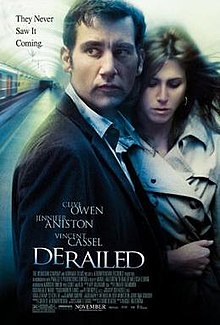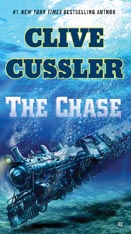I saw a great thriller the other day: the 2005 movie Derailed, directed by Mikael Håfström. So many movies that bill themselves as thrillers disappoint, with predictable and overused plots -- or violence and special-effects masquerading as a plot -- and characters that are a bit too heroic for ordinary mortals. Derailed thankfully avoids that.
 Really great mystery/thrillers fool the reader into thinking they know what's coming next. The protagonist starts out as an innocent Joe who is sucked into violent or dangerous circumstances beyond anything he's encountered before. As the story progresses his life is thrown into turmoil. But little by little, he becomes hardened and more savvy. He learns to fight back. And there's a plot twist.
Really great mystery/thrillers fool the reader into thinking they know what's coming next. The protagonist starts out as an innocent Joe who is sucked into violent or dangerous circumstances beyond anything he's encountered before. As the story progresses his life is thrown into turmoil. But little by little, he becomes hardened and more savvy. He learns to fight back. And there's a plot twist.In Derailed, Charles, a married man with a chronically ill daughter, meets a sexy woman named Lucinda (Jennifer Anniston) on a commuter train. Within a few days, their innocent encounters go further, drawing them to a cheap downtown hotel room. But as they are about to consummate their adulterous act, a thug bursts into the room to rob them. Charles is beaten into unconsciousness and the woman is raped. Later, she refuses to allow Charles to call the police; her husband will divorce her and take away the children.
But, the criminal isn't done with them: he has their wallets and knows where they live. He demands money. Charles pays, thinking that will end it, while desperately trying to conceal the affair from his wife. But the harassing calls keep coming, as do the demands for more blackmail money. He takes Lucinda hostage, demanding $100,000. Charles feels guilty that Lucinda was raped, and will pay anything to protect her.
Charles enlists the help of an ex-con he knows, who works in the company mail room. The ex-con's plan is to frighten the blackmailer with a gun when the money is to be paid. Instead, he is murdered while in the car with Charles. Charles escapes, but the police are now investigating the murder and question him.
As the story nears the end, we discover the robbery and blackmail are not what they seem. Charles becomes suspicious when Lucinda vanishes, and finds she didn't have the high-powered job and family she claimed. He soon discovers she and the thug are a team of scam-artists, and Charles was their latest mark. He then hatches his own plan to trap them in their next scam.
The plot twist -- the scam -- comes as a total surprise because the viewer has invested so much sympathy in Lucinda. Charles' character is slowly transformed from a naive, frightened victim into a determined, cunning schemer bent on revenge. In the final scene, where the sneering thug has Charles right where he wants him, Charles turns the tables, and the thug realizes he's the one who has been set up, making for a thoroughly satisfying ending.
